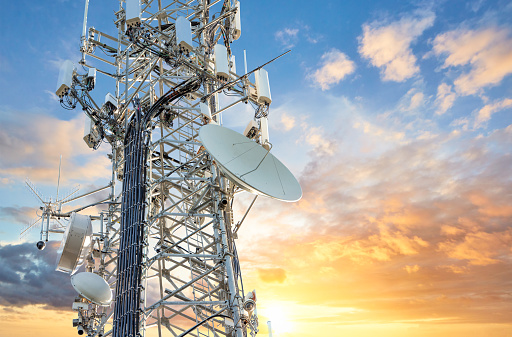If you've ever walked through a city, you may have seen tiny 5G cell towers on street light poles. They appear like tiny boxes however they're actually sending wireless signals from cell phone providers to your phone.
These smaller towers are replacing larger specially-designed cell towers. While they're less noticeable however, they could cause problems for people.
A FCC's Radiation Exposure Thresholds
The FCC's Radiation Exposure Thresholds define the maximum amount of time an individual can be exposed to electromagnetic energy generated by wireless devices. The limits for exposure are based on scientific data that show that RF energy can cause harm to health.

The absorption rate specific (SAR) is an indication of the radiofrequency energy that is taken up by tissues. It's usually 1.6 watts per kilogram, spread over a Gram of tissue.
Since 5g is able to transmit at higher frequencies this could be able to increase the intensity of energy on the skin as well as other body areas. This could lead to various possible harms, like the development of skin diseases such as dermatitis and skin cancer and cataracts.
Because of the potentially harmful effects of radiation from 5G, PSU has chosen to set a general localized maximum power density of four mW/cm2 based on the average over 1 cm2, and not to exceed 30 minutes for all 5G services at 3000 GHz. This limit for localization is in line with the peak spatial-average SAR of 1.6 W/kg, which is averaged over 1 grams of tissues at six GHz.
The FCC's Maximum Exposure Thresholds
If you've ever operated a cell phone, you're probably aware that the safest range from the tower should be at least 400 meters away. This is because the transmitting power of a cell tower increases dramatically the further away the tower is.
Although this may sound like a good idea, the reality is that people living in close proximity to towers might be more prone to health issues. For instance, a study conducted in 2014 in India discovered that those who lived within 50 meters of cell towers had significant more health issues than those who lived farther away from the antennas.
However, what is a safe distance from a cell tower revealed that those who relocated into areas farther away from the cell towers saw their symptoms improve within a few days. Another study has demonstrated that exposure to extreme amounts of electromagnetic field radiofrequency (EMFs) could cause cancer, brain tumors as well as other health issues.
This is because RF radiation, used in wireless communication, can penetrate the human body's outer layer of skin. It is crucial to know since the skin functions as a barrier to protect against mechanical injury, infection caused by pathogenic microorganisms and entry of toxic substances. It is also the biggest organ in the human body and is accountable for keeping the integrity of the other organs.
what is a safe distance from a 5g cell tower on numerous assumptions that aren't supported by evidence from science. safe distance from cell tower include the false belief that short-term exposures to RF radiation are safe due to the limited absorption into body (i.e. thermal heating of tissue).
The assumption is also ignoring the more extensive penetration of ELF components of modulated RF signals as well as the effects on the body of short bursts caused by RF pulses. These assumptions are not in line with the current understanding of biological consequences of RF radiation. As such they should not be considered for health protection exposure standards.
Additionally, the ICNIRP and FCC restrict their exposure limits to local peak SARs that are based on the peak spatial specific absorption rate (psSAR), which can be described as not a reliable dosimetric instrument to assess the amount of radiation exposure. In particular, psSAR is inaccurate for frequencies above 6 GHz. Furthermore, psSAR has not been evaluated for RF radiation exposed to other environmental agents such like sunlight. The interactions of RF radiations with different agents in the environment could result in antagonistic or synergistic effects. This can lead to an increased risk of negative health adverse effects. For instance, exposure to RF radiation and sunlight could cause an increase in the incidence of developing skin cancer, as well as aggravate other skin disorders, such as acne.
